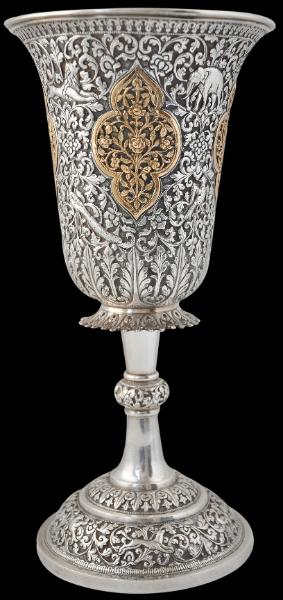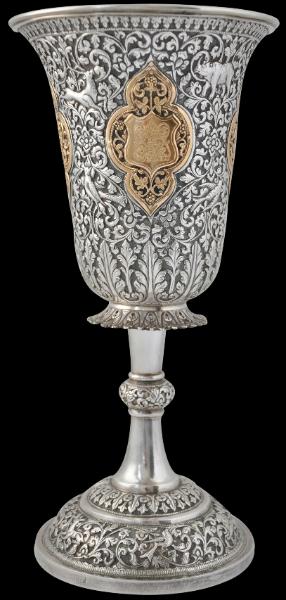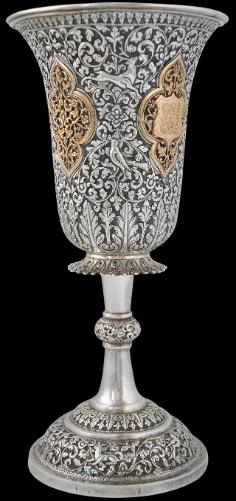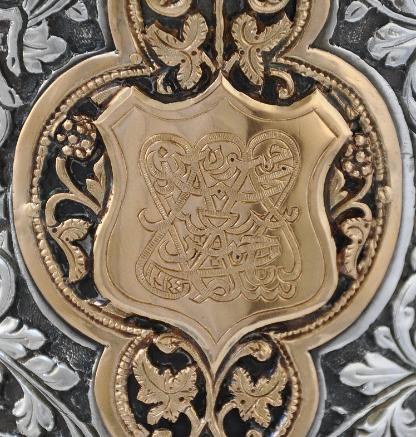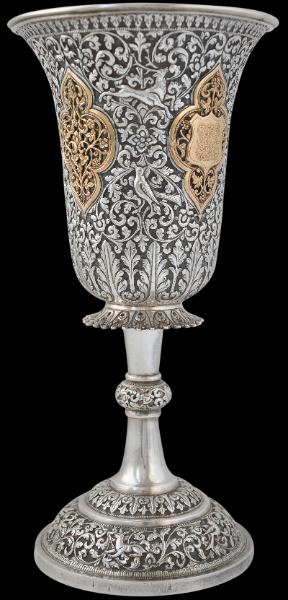
Colonial Indian Cutch Silver
Large & Rare Gold & Silver Chased Chalice-Vase
Cutch, India
circa 1825
height: 29.2cm, diameter: 14.7cm, weight: 939g
This tall, heavy silver vase in the shape of a chalice is typically Cutch in terms of its form and style. The sides of the cup are inset with four large repoussed gold plaques. This is the first time that we have seen such an overt use of gold (as opposed to silver-gilt) with silver in a colonial-era Cutch piece.
The vase sits on a wide, domed foot. It has a baluster stem rising to a leaf-form frill, above which rises the cup with its wide, everted rim.
The foot and sides of the cup are chased with typically scrolling leaf and flower motifs amid which is a striding peacock, two lions, a horned rhinoceros, an antelope, an elephant, a long-eared cat, a stork, and other birds.
The gold plaques are beautifully worked with interlocking leaf and flower designs. One is emblazoned with an armorial cartouche that is particularly finely engraved with an Arabic insignia. The engraving is stylised and interlocking but appears to include the name ‘din Muhammad Sayeed Rahman’ and a possible date which is likely to be 1244 H (approximately 1828 CE). As such, although this piece is a colonial era example of Cutch gold and silversmithing, clearly it has been made for a local client and quite possibly a local ruling Muslim princely family. Certainly, the local rulers were Muslims, with the local sultan being styled as the Rao of Cutch.
If the dating of 1828 is correct, then this piece suggests that Cutch silverwork of this type has a longer history than suggested by the literature which almost invariably ascribes pieces of typically Cutch work to around 1870-80 or later, making this piece a potentially important piece for the engraved date alone.
References
Dehejia, V., Delight in Design: Indian Silver for the Raj, Mapin, 2008.
Terlinden, C.,
Mughal Silver Magnificence, Antalga, 1987.
Wilkinson, W.R.T.,
Indian Silver 1858-1947, 1999.
Inventory no.: 1541
SOLD
here

